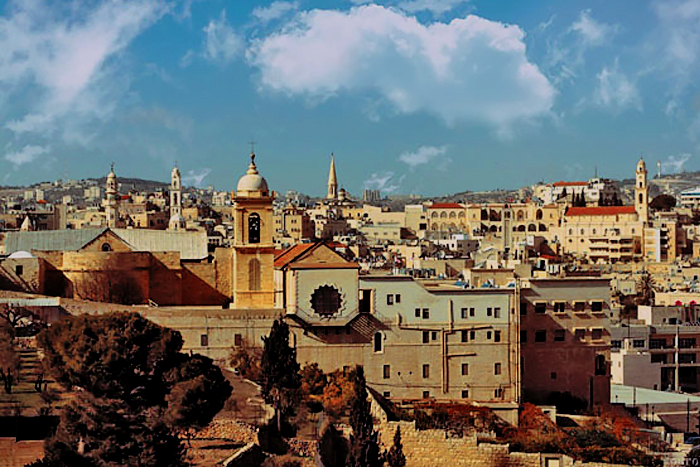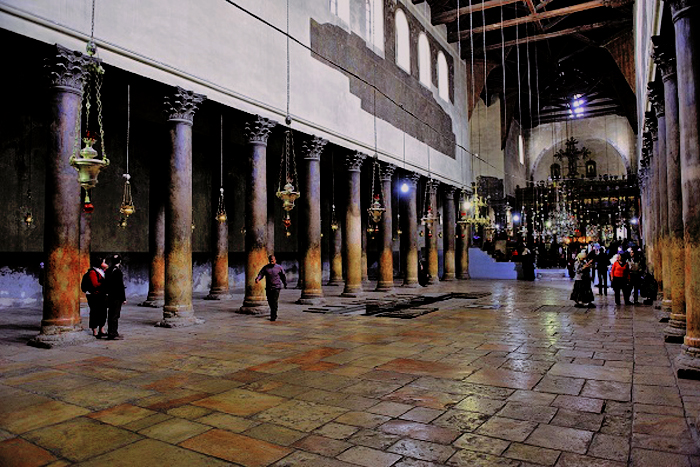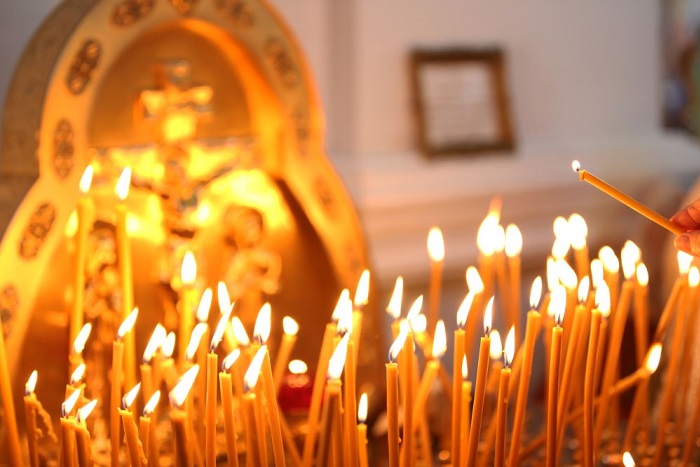
Bethlehem is the main center for Christian pilgrimages on Christmas days. In Jewish tradition, the “House of Bread” (as the name of the city is translated) was revered even before the founding of Jerusalem. Deacon Alexander Zanemonets, professor of Byzantine history at the University of Haifa, tells about the history of Bethlehem.
Olga Bogdanova
Father Alexander, when did the particular reverence for Bethlehem begin?
It started immediately after the foundation of the Kingdom of Israel, that is, prior to the foundation of Jerusalem. King David was born in Bethlehem around the 10th century. He was a very revered man, and Bethlehem was treated in a special way as the birthplace of this king, who was anointed at the command of God. It was also known that the Messiah would be of the lineage of David and would be born in Bethlehem, which added a special Messianic significance to the respect of the town. At the same time, it remained an ordinary provincial town on the edge of the Judean Desert.
Bethlehem gained more prominence in the 1st century BC under Herod the Great. Herod spent a lot of time outside Jerusalem. Halfway between the capital and the Dead Sea, he built a residence for himself called Herodium. The road from Jerusalem to this country residence went through Bethlehem, which sparked a great economic revival in the town. Christ was born in this slightly more economically vibrant town.
Did Christians begin to honor Bethlehem in apostolic times?
Possibly yes. Although apparently, the Lord never visited Bethlehem after his birth. At least there’s no indication of it in the Gospels.
Then, in the 4th century, under Empress Helen, when Christianity became an officially recognized religion, the Church of the Nativity of Christ was built in the town, and the cave, where the Messiah was born, was in the crypt – the underground part of the church.
At the time when the Savior lived, caves were no longer inhabited, but they were used as utility rooms – cellars, cattle stables and so on. That is why, when Mary and Joseph came to Bethlehem, one of such caves, which was used as a stable, became their shelter.
We often do not find ancient houses but we do find the caves that were under them. That is why the birthplace of the Savior has survived to this day, but not as part of the house, but as one of the chambers of the basilica.
Emperor Justinian had the temple rebuilt in the 6th century; only mosaic floors have survived from this basilica. After that, the church was rebuilt only from the outside and remained unchanged inside.
The Christian community of Bethlehem was small and there was no need for a big church in the town. It is safe to say that the Basilica of the Nativity was built chiefly for the numerous pilgrims who came to the town. This indicates a special appreciation of this site.

Were the shrine and the town severely damaged after the Persian invasion in 614?
The whole Holy Land was devastated at that time. The Persians tried to destroy all the Christian infrastructure, but the Basilica of the Nativity was preserved. There’s a legend that explains why this happened. There was an image of the Magi above the entrance to the temple. They were traditionally considered to be Persians and portrayed as Persians. The Persian conquerors saw it and decided, “Our ancestors honored this place, so we can’t destroy it.” Thus, thanks to the Magi, the temple was not destroyed by their descendants.
However, soon the Holy Land was conquered by Arab Muslims. Christians ended up being “a drop” in a vast sea of Islam. Naturally, Muslims wanted to take over the basilica to use the premises for keeping cattle, for example. The Christian community defended their church and gradually transformed it into a military fortress. For example, the large and beautiful entrance was paved with stones, and they left only a small wicket instead of the spacious entrance gate.
Despite the Muslim oppression, the small Christian community in Bethlehem was preserved at all times.
The town was reborn in the 19th century, when the Ottoman Empire was in decline and the presence of Christians in the Holy Land was gaining momentum.
The Church of St. Nicholas the Wonderworker – a parish church for local Arab Christians – was built in the 19th century. The Russian Mission organized a seminary for Orthodox Arab girls, which was a kind of a teacher training college.
Presently, Bethlehem is located in the territory of the Palestinian Authority. There are fewer and fewer Christians in the town. Just thirty years ago they were the majority, but now, due to the demographic explosion in the Arab world and the diminishing role of Christianity, the situation has changed dramatically. Many Arab Christians emigrate, although traditionally, only a Christian (an Orthodox or a Catholic) can be the mayor of Bethlehem or Nazareth.
What role does Bethlehem play in the life of the country?
Today Bethlehem has almost merged with Jerusalem. Travel guides of the early 20th century pointed out that it was located 12 miles from the capital; by the middle of the century this distance shrank to 4 miles, and now it is just 1 mile away. So, there are the outskirts of Jerusalem, then there is a ravine, along which the border between Israel and the Palestinian Authority runs, and then there are suburbs of Bethlehem. The two municipalities don’t merge because of this political border.
Within the Palestinian Authority, Bethlehem is a significant city, primarily because of its status as a tourist and pilgrimage destination and, of course, due to its proximity to Jerusalem. As in the days of Christ, Bethlehem is still one of the smaller towns in the country. It is now home to only a few dozen thousand people.
Translated by The Catalogue of Good Deeds
Source: http://www.taday.ru/text/1982157.html



